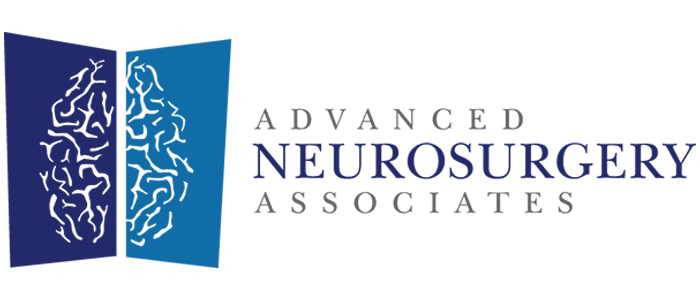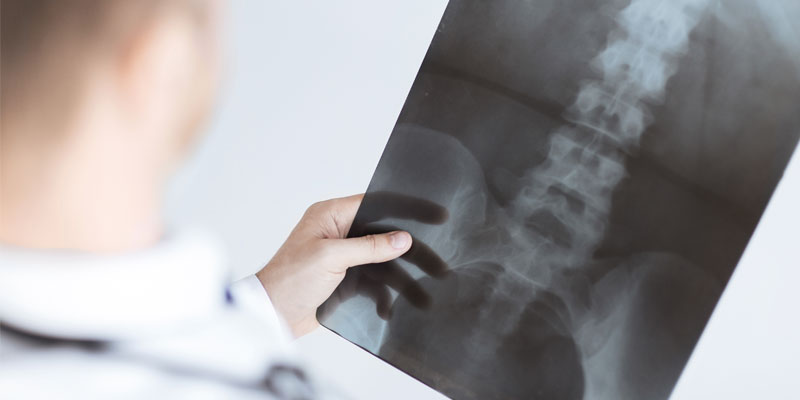Herniated Discs
It is estimated that some 80% of the population will experience lower back pain at least once in their lifetime. In many cases, back issues resolve themselves with rest and time. However, serious cases may require expert treatment, including herniated discs.
ANA’s neurosurgeons are experts at a variety of spine conditions. Below we explain how to identify the symptoms of a herniated disc, plus when you should consult a neurosurgeon.
What Is a Herniated Disc?
The anatomy of the spine includes vertebrae that are stacked on top of one another. This provides both protection of the spinal cord, as well as a flexible support structure that enables movement.
There are seven vertebrae in the neck (cervical vertebrae), 12 vertebrae in the mid-back (thoracic vertebrae) and five vertebrae in the low back (lumbar vertebrae). These vertebrae are all separated by protective discs, which are padding that acts as cushions between each vertebra. Each disc has a soft, jelly-like inside surrounded by a tough outer layer.
When one of these discs ruptures for whatever reason, it is called a disc herniation. However, disc herniation is a condition that is referred to by a number of different names, often used interchangeably. These names include:
- Herniated disc
- Pinched nerve
- Prolapsed disc
- Protruding disc
- Ruptured disc
- Slipped disc
- Lumbar disc disease
You may also hear the term bulging disc, which creates similar symptoms although the degeneration process is different. Bulging discs occur when a spinal disc loses flexibility or dehydrates, reducing its ability to cushion or support the vertebrae as it flattens out of its normal space.
Despite the number of terms, all of these names still define the two basic types of disc herniation:
- Contained disc herniation where only the tough outer layer is involved
- Non-contained disc herniation, which occurs when the break in that outer layer results in some of the soft inside protruding out of the disc.
Are Herniated Discs Hereditary?
Lifestyle and environmental factors are typically related to herniated discs. For example, some common causes are heavy lifting, stress from a twist or turn, and driving.
However, research also suggests an inherited element. The influence of genetic factors was strengthened by the identification of two collagen IX alleles associated with lumbar disc herniation and sciatica.
Herniated Disc Symptoms: When to See a Doctor
The majority of herniated discs occur in the lumbar spine (lower back) but can also occur in the cervical spine (neck). While herniated discs can result in problematic symptoms, there are cases in which disc herniation is revealed in imaging studies in people without any symptoms.
In those who are symptomatic, herniated discs can cause the following:
- Muscle weakness in the affected area
- Pain in the back arm, leg or foot. A herniated lumbar disc causes pain typically felt in the leg and/or and buttocks. A cervical herniated disc results in arm or shoulder pain.
- Tingling or numbness sensation in the affected area.
Diagnosis of a Herniated Disc
The diagnosis of a herniated disc consists of several phases. The first is a medical history and physical exam done by a doctor. In this exam, the doctor will check for back pain. He/she may palpate certain areas to determine the precise location of the pain and also perform reflex and muscle strength tests.
The patient will be asked about the nature of the pain (e.g., throbbing versus dull), if they experience any tenderness, and which positions or activities increase or lessen the pain. Past treatments for the condition will also be reviewed.
In order to confirm or clarify a diagnosis, and to obtain additional information, imaging tests may be ordered. These include:
- Computed tomography (CT) scan
- Discogram
- Magnetic resonance imaging (MRI) scan
- X-rays
Treatment & Herniated Disc Surgery
Before considering surgery, all nonsurgical treatments should be exhausted. These may be used separately or in conjunction with one another. These treatments may include:
- Epidural injections
- Heat and ice therapy
- Nonsteroidal anti-inflammatory drugs or other pain medications
- Physical therapy
- Rest.
If these treatments are not effective over time, and pain and other symptoms disrupt activities of daily living, surgery may be a consideration.
The most common surgery for a herniated disc is a discectomy. In this procedure, either part or the entire disc is removed. Using minimally invasive surgical techniques, it requires only tiny incisions through which specialized instruments are inserted to remove the damaged tissue with the aid of a microscope.
This technique shortens surgery time and minimizes tissue and muscle disruption and any possibility of risks or complications. In most cases, a discectomy can be done on an outpatient basis.
Recovery from Herniated Disc Surgery
At one time, when open surgery was the only option for herniated disc surgery, recovery was extensive.
However, with the advent of minimally invasive surgical techniques – which are performed with limited muscle or tissue involvement – procedures may be performed on an outpatient basis. This means recovery is much quicker and the patient may go home the same day following surgery.
Often, physical therapy starts the next day. In the meantime, pain or discomfort is usually temporary and restricted largely to the incision sites.
The road to full recovery depends on the individual patient as well as his/her general health. Many patients can return to work (non-physically demanding jobs) in a week, and make a full recovery with return to normal activities by six weeks.
The surgeon will provide a detailed recovery plan with detailed instructions that guide every patient in terms of expectations for recovery and resumption of activities.
Lumbar & Cervical Herniated Discs
A variety of the most common spinal disorders are frequently encountered at ANA. We work with our patients to carefully evaluate these conditions, and we seek to exhaust all non-surgical solutions before considering surgery. Contact our team to discuss the best treatment option for your condition.





